- All checklists
- Call Center
- Call center setup checklist
Call center setup checklist
The call center setup checklist provides steps for starting a call center, including setting goals, estimating call volume, choosing software and staff, optimizing features, and creating a recovery plan. LiveAgent is recommended as a reliable software option.

- Set the goals and objectives of your call center
- Estimate the number of calls
- Determine the setup type
- Evaluate the costs and benefits of the phone system
- Estimate budget and staffing requirements
- Decide on the type of call center software to use
- Choose a software provider based on your needs (Consider LiveAgent)
- Optimize call center features
- Hire your call center staff
- Train your team for any potential incidents
- Provide your call center with proper equipment
- Organize your call center processes
- Model the organizational structure of your call center
- Choose relevant KPIs
- Create a robust disaster recovery plan
- Establish customer service quality assurance procedures
- Perform tests before going live
A call center is a form of customer service that has been around for decades. It’s an integral part of any business, but setting up and implementing one can be tricky.
This guide will help you set up your call center in the most efficient way possible. We’ll provide tips from finding your team members, all the way down to what software you should use to run it.
The importance of a call center setup checklist
A call center can be a huge boon to any business, but conversely, it can be a disaster if not set up correctly. That’s why having a call center setup checklist is so important. It will help you ensure that everything is in order before agents start answering calls.
Go through all the stages of setting up a call center to make sure that every step is done correctly. The aim of this guide is simple: to help you set up your own call center and run it successfully.
Who can benefit from a call center setup checklist?
- business owners – to help them run their call center as efficiently and effectively as possible
- center agents – to help them understand the process of setting up and implementing a call center
- call center managers – to help them set up an efficient call center
Are you in one of these groups? If so, keep reading.
Explore the setting up a call center checklist
Before you launch your call center, define your business goals clearly. This will help guide your decisions along the way.
Why is setting goals important?
When you’re setting up a call center, it’s easy to get sidetracked. You may want to add too many features or change the goal of your call center halfway through implementation. Setting goals in advance helps you prepare a business plan and meet all the requirements.
How to handle setting goals?
- Decide which products and services you will sell from the call center. It’s essential to have a clear goal in mind.
- Determine the size of your call center. How many agents will you need? Think of the smallest and the ideal number. This will help you determine how much space and equipment you’ll need.
- Define what type of customer service you want to offer.
- Consider how your call center will fit into the organization, e.g. is it an independent department or a part of another one? What are its goals and objectives in relation to other departments, if any?
Setting up your own call center based on your own needs is vital as every business is different and has its own methods.
Which tools to use for setting the goals of your call center?
- Asana or similar project management tools can help you plan and organize your call center’s goals.
- Customer Relationship Management (CRM) software like Salesforce or LiveAgent can help you manage your leads and track each agent’s goals and objectives.
One of the most critical steps in setting up an inbound or outbound call center is estimating the number of calls that will be made and received. This will help you figure out how many agents you need, as well as what type of software and equipment you’ll require.
Why is estimating the number of calls important?
It’s essential to know how many calls your call center will make and receive daily, weekly, and monthly. So that you can adequately staff your call center and set up the necessary equipment.

How to estimate the number of calls?
- Survey customers – ask them what services they would like to see offered through a call center.
- Look at your customer service logs – how many calls do you currently receive? This is a good starting point for estimating the number of future calls.
- Review your website analytics – which pages get the most traffic, and what are people looking for on your website? This will help you determine which of your website visitors are likely to call.
These three methods complement each other, and using all of them is crucial for getting a complete picture of the calls that will be made in the future.
Which tools to use for estimating the number of calls?
- Call center software like Callfire, LiveAgent, or predictive dialers like Noble Systems can help you estimate the number of calls that will be made and received.
The call center design you decide to go for should best suit your and your customers’ needs. There are two types of call center setups: on-site and virtual. The former have agents, hardware, and software all stored and operated within your business, whereas the latter is hosted by a phone company on an offsite server.
Why is it important to determine the setup type?
The setup type is vital to the success of your call center. Each one has its own advantages and disadvantages that you must weigh up before deciding.
How to determine the setup type for my business?
On-site call centers are generally better for businesses that have a lot of customer service needs or want more control over their agents. However, they require more space and equipment.
Virtual call centers are suitable for businesses with limited budgets or those that offer customer service 24/7. No physical location is required as they use a cloud to store all the data, which also means such organizations can be more flexible and scalable (agents can have access to the software wherever they are).
The best way to determine the setup type for your business is to ask yourself a few questions:
- Do you have employees that work remotely?
- What type of equipment do you have or plan to purchase?
- How many calls do you anticipate receiving each day/week/month?
- What is the budget for your call center?
Answering these questions will help you determine if an on-site or virtual call center is a better fit for your business.
Which tools to use for determining the setup type?
- Check the offers of different setups – for example, go to the LiveAgent website and check what the possibilities are and which one would work best for your business.
Phone systems can be very costly. They are expensive to purchase and maintain, so choosing an adequate business phone system is essential for any business that wants to run a successful call center.
Why is evaluating the costs of the phone system important?
It is crucial to evaluate the costs of the phone system because doing so will help you determine which system is best for your business. There are many different types of phone systems available, and each one has its own benefits and drawbacks.
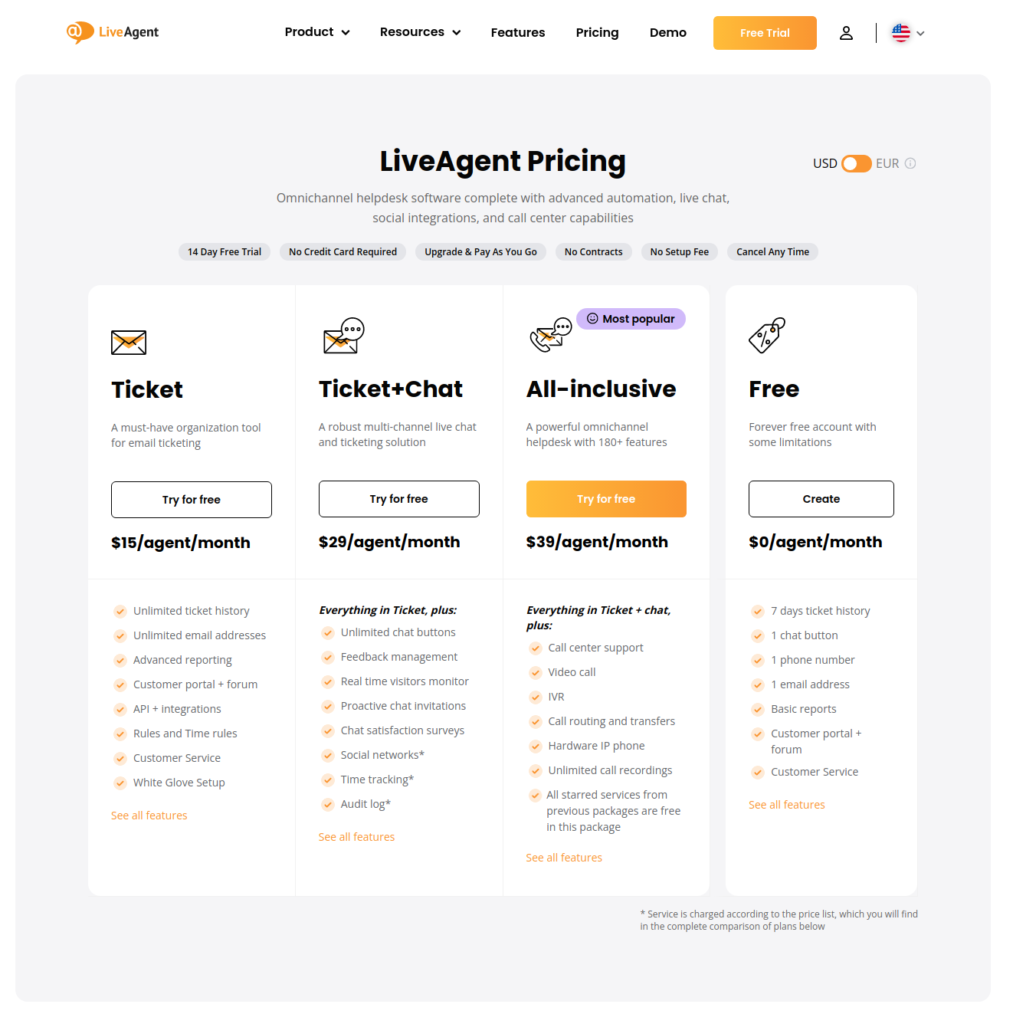
How to evaluate the costs of a phone system?
To evaluate the cost of a phone system, you should consider the following:
- the price of the phone system itself
- the costs of maintaining the phone system
- additional features and call center services that are available
There is no one-size-fits-all answer to this question. Instead, you need to consider the needs of your business and the type of phone system that will best meet those needs.
What are the most common phone systems available on the market?
- Voice Over Internet Protocol (virtual VoIP) Phone Systems
- Traditional phone lines
- Hosted PBX Systems
- IP PBX Systems
Once you have decided to run an on-site or virtual call center, the next step is determining how much money and staffing will be required.
Why is it important to estimate budget and staffing requirements?
The budget and staffing requirements for your call center are essential to determining how much money and manpower you will need to get your call center up and running. This information is also essential when fundraising or hiring employees.
How to estimate budget and staffing requirements?
To estimate the budget and staffing requirements for your call center, you need to consider the following:
- the money required for setting up the call center
- the costs of maintaining the call center
- the number of employees required
- the type of employees needed
- take into account all shifts, staff absences, and days off
- retain your financial health with cash flow management
You can create a realistic call center budget and staffing plan by answering these questions.
Tip: When creating your budget and staffing plan, it is important to remember that these numbers will change over time. As your call center grows, you may need to add more employees or upgrade your equipment. Make sure you are prepared for these changes so your call center can continue to run smoothly.
Which tools to use for estimating budget and staffing requirements?
- predications
- call volume forecasting
There are many different types of call center software available on the market. It is important to choose the right software for your call center to run your business effectively.
Why is deciding on the type of call center software important?
Choosing the right call center software is crucial since the available solutions differ in cost, deployment model, maintenance, scalability, and robustness. You need to find the one that suits your business best.
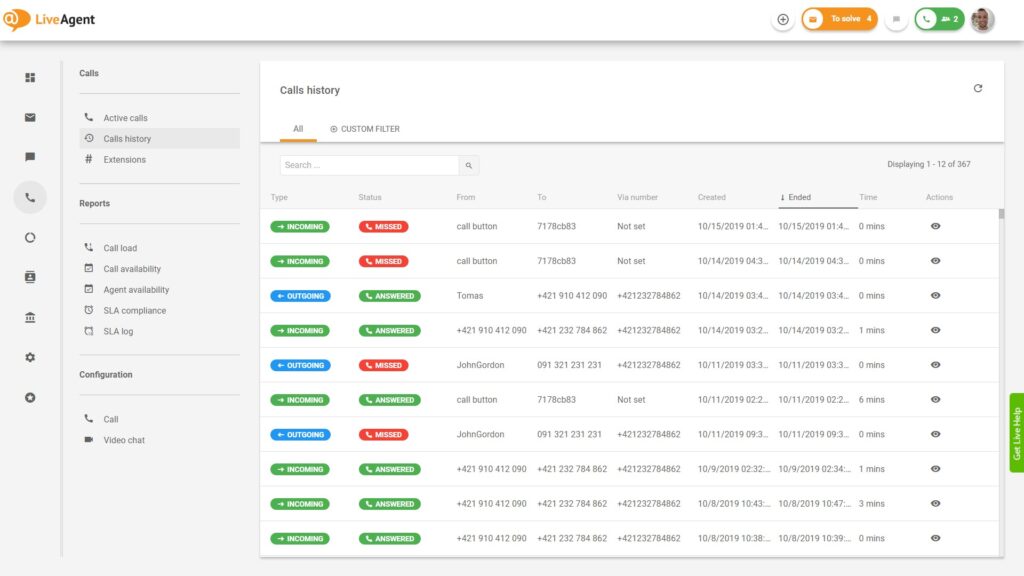
How to decide on the type of call center software?
You should consider the following factors when choosing the type of call center software you need:
- The number of agents working in your call center – the amount of software required depends on how many people will be answering calls. If you have a large number of employees, then it’s likely that more advanced call center software will be required.
- How much data will there be – not all call center software can deal with a large amount of data. If your call center is going to be handling a lot of customer information, you need to make sure the software can handle this load.
- What type of reporting is needed – different types of businesses need different styles of reports. Make sure the software you choose can provide the kind of reports you need.
- What type of customer service is required – some call center software provides live customer support while others do not. Make sure the software you choose meets your needs.
Which call center software should you choose?
- on-premises – installed on your company’s computers
- cloud-based – hosted by a third party and accessed online
- hosted – installed on the provider’s computers
- browser-based – accessed through a website
Once you have decided on the call center software you need, it is time to choose a provider. Not all providers offer the same services, so it is essential to do your research before deciding.
Why is this step important?
The provider should meet all of your needs. If they cannot, you won’t be able to run your call center effectively.
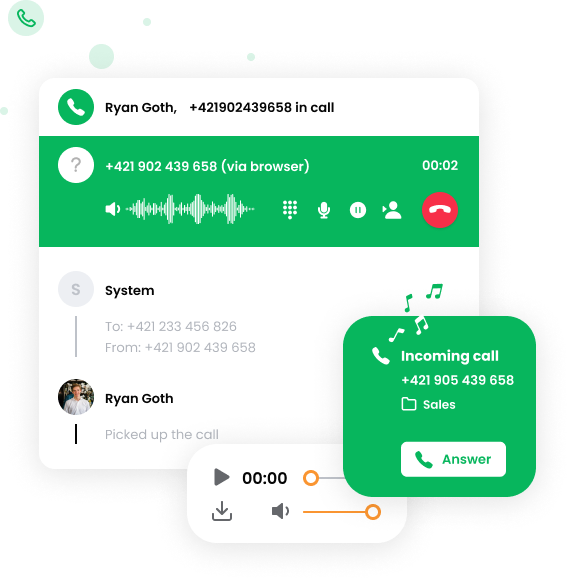
What should you look for in a call center software provider?
In your search for a call center software provider, be sure that it offers the following features:
- The ability to handle your call volume – the software should be able to deal with the number of calls your call center receives.
- Robust reporting capabilities – it should provide the reports you need to run your business effectively.
- The ability to integrate with other systems – the call center solution should connect with the rest of your business’ hardware and software.
- Ease-of-use, scalability, and flexibility – you need a system that is easy for employees to use so they can answer calls quickly. It also needs to be scalable as you may hire employees in the future. In addition, the chosen software should be flexible enough to accommodate any changes that your business may undergo.
Which call center provider to choose?
Noteworthy! If you are looking for a reliable, scalable, and easy-to-use solution that is affordable and robust, LiveAgent is for you. It offers all of these features while providing cost-effective call center software. Best of all, it’s completely free to try.
After installing your call center software, it’s time to optimize its features.
Why is optimizing call center features important?
Optimizing call center features will help increase productivity and improve the customer experience.
How should you optimize call center features?
Firstly, train your employees on using the software and what each feature does. This will help them answer calls quickly and effectively.
Secondly, configuring the software to meet your business needs will help improve productivity and customer satisfaction. Don’t forget to test the software to ensure it is working properly, helping to prevent any problems from occurring in your call center.
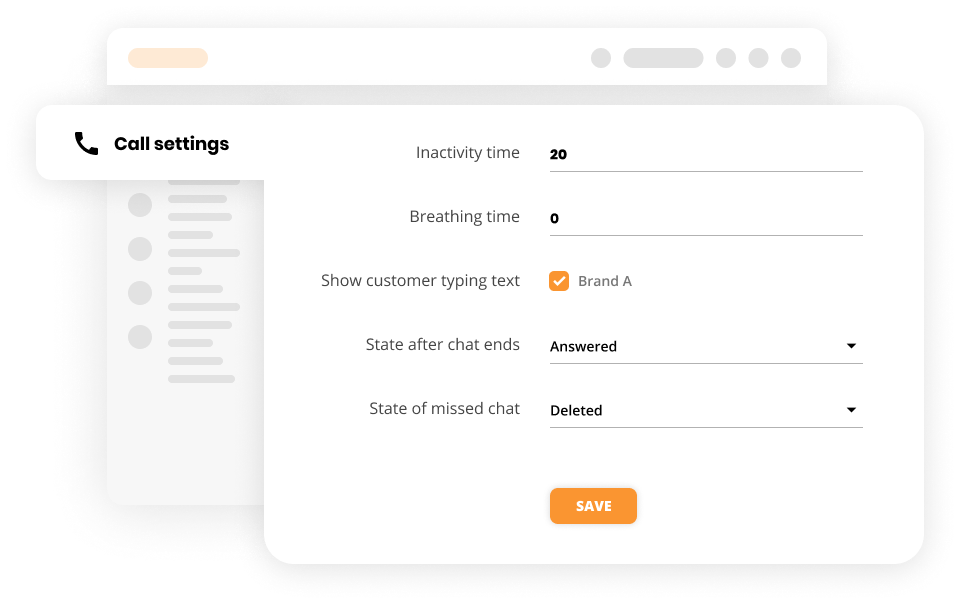
Which tools to use for optimizing call center features?
- Call routing – you need a system that routes calls based on their importance. It is also crucial for it to follow defined processes to keep employees organized and efficient.
- Allow agents to prioritize customer requests – the software should let call center agents rank customer requests in order to reach the most valuable ones first. This will help them respond faster and improve the overall call center experience for customers.
- Workflow management – providing a way for employees to create their workflows based on what is required by each individual employee or team. It also needs to allow for changes to keep up with the ever-evolving needs of your call center.
- Quality assurance – such tools as LiveAgent and its help desk software allows you to track and monitor agent performance. This enables you to identify potential improvement areas and increase customer satisfaction.
- Call recording – allowing you to record as many phone conversations as you want.
- Easy to navigate IVR menu – to help customers quickly find the information they need.
Time to get started with the hiring process.
Why is hiring call center staff important?
Hiring a solid team of employees and conducting a successful recruitment process will help ensure that all customers are served quickly and effectively. You can also increase productivity by giving agents more training opportunities to do their jobs better.

What should you look for in call center staff?
- the ability to work under pressure – agents need to handle high call volumes yet remain calm
- good customer service skills – they should build positive relationships with customers and provide them with the best possible customer experience
- the ability to function as part of a team – working together to meet the call center’s goals
- excellent listening skills – to hear what a caller is saying and respond quickly
Which tools to use for helping you hire call center staff?
- LinkedIn – it’s a great way for finding qualified candidates that may be a good fit for your call center
- employee referral program – to find quality employees who are already familiar with your company and its culture
Once you have found your dream call center team, it is important to train them for any potential incidents.
Why is training your team important?
Through the right agent training program, you can rest assured that all employees are prepared for any situation. Also, it allows your team to learn and improve their skills so they can provide excellent customer service. Finally, it helps employees feel more confident in their abilities and prepares them for challenges they may face while working.
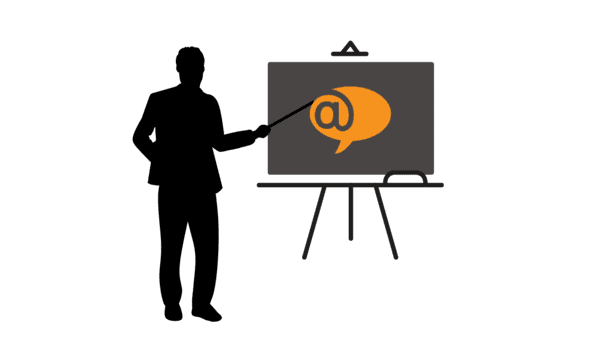
How should you train your team?
You need to discuss many aspects of call centers with your team and provide ongoing training. Here are some of the most important topics:
- how to handle high call volumes – agents need to be prepared for days when there are a lot of calls coming in, so they should know how to manage their time and prioritize customer requests
- how to deal with difficult customers – some callers will be challenging to deal with, so agents need to be prepared for these situations and able to handle them calmly and professionally
- how to use the call center software – your team needs to be familiar with the software so that they can navigate it easily and find the information they need quickly
- the importance of customer satisfaction – call center staff should understand the importance of customer satisfaction and be prepared to handle any complaints
How do you train your team?
- in-person workshops
- online tutorials or recorded webinars
- own in-built learning platforms
For your team to function properly, you must supply them with the right equipment.
Why is providing your call center with proper equipment important?
Your call center staff need the right equipment to do their jobs in the way they were trained.
What kind of equipment will you need?
It depends on a few factors:
- the center type – Will it be a voice or contact center?
- the number of agents – How many employees will you have working there?
- the type of work agents will be doing – What tasks will they perform?
- your budget – How much money can you afford to spend on equipment?
Which tools to use for equipping your call center?
- stable internet connection – high-speed internet is essential for agents to be able to handle high call volumes without any lag
- the right VoIP software – it should be able to support the number of agents you have and provide all the key features you need
- call center software – this is essential for managing calls and tracking data
- headsets and microphones – these are necessary for hands-free calling and will help reduce background noise
- computing devices such as laptops or desktops and monitors
Organizing your call center processes is key to a successful launch. Your team will work more efficiently and provide better customer service if you create a procedure for handling inquiries and sales calls, etc.
Why is organizing your call center processes necessary?
By organizing your call center processes, you ensure that agents can work efficiently and provide the best possible service to clients. This also helps minimize any confusion when a call center first launches.
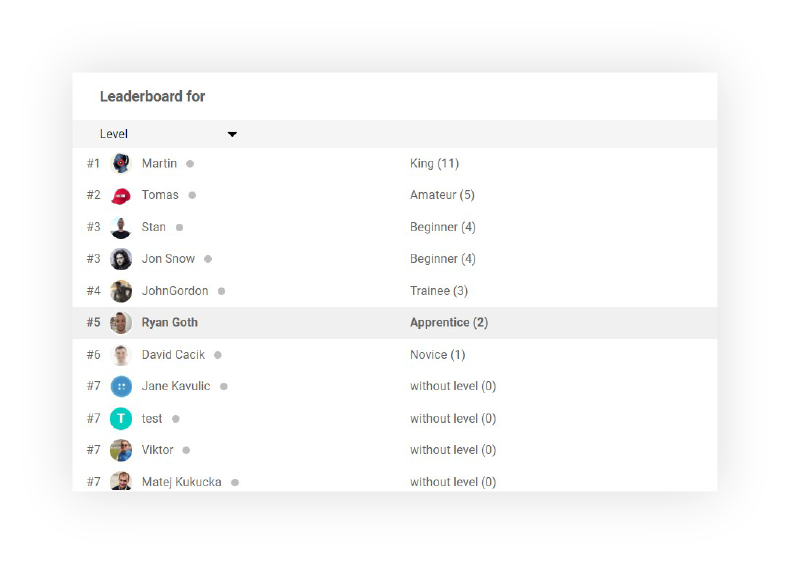
What processes do you need to organize?
Many processes need organizing when setting up a call center, including:
- the onboarding process – this is how you get new agents up to speed and teach them the basics of the job
- training sessions – familiarize all agents with the call center software and procedures
- the complaint handling process – train your staff on how to deal with complaints
- the reporting process – measure success and track data
Which tools to use for organizing call center processes?
- spreadsheets – great for tracking data and organizing information
- project management tools – can help you keep track of all your call center processes and ensure that they are completed on time
Model the organizational structure of the call center after your own company’s org chart, which will help agents feel more comfortable in their new jobs. Furthermore, internal communication between departments will be a lot easier.
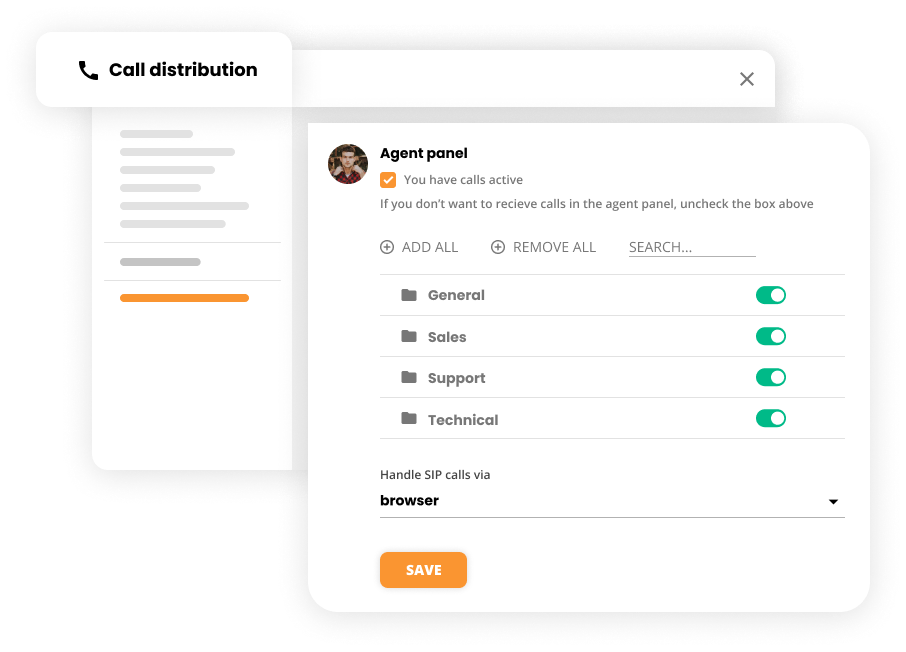
How to model the organizational structure?
There are many ways to model the organizational structure of a call center, including:
- by department – common in large call centers, helps agents specialize in specific tasks
- by the process – organizes agents by the type of task they are performing (e.g. customer service, sales, technical support)
- by-product or service – categorizes agents by the type of product or service they offer
Which tools to use for modeling the organizational structure?
- organizational charts – these can help you visualize the structure of your call center and make it easier to understand
- video conferencing solutions such as LiveWebinar
Establishing the right key performance indicators (KPIs) can have a huge impact on the success of a call center.
Why are KPIs important?
By tracking metrics, you can see how your call center performs and identify areas that need improvement. This will help you make data-driven decisions about improving your business operations.
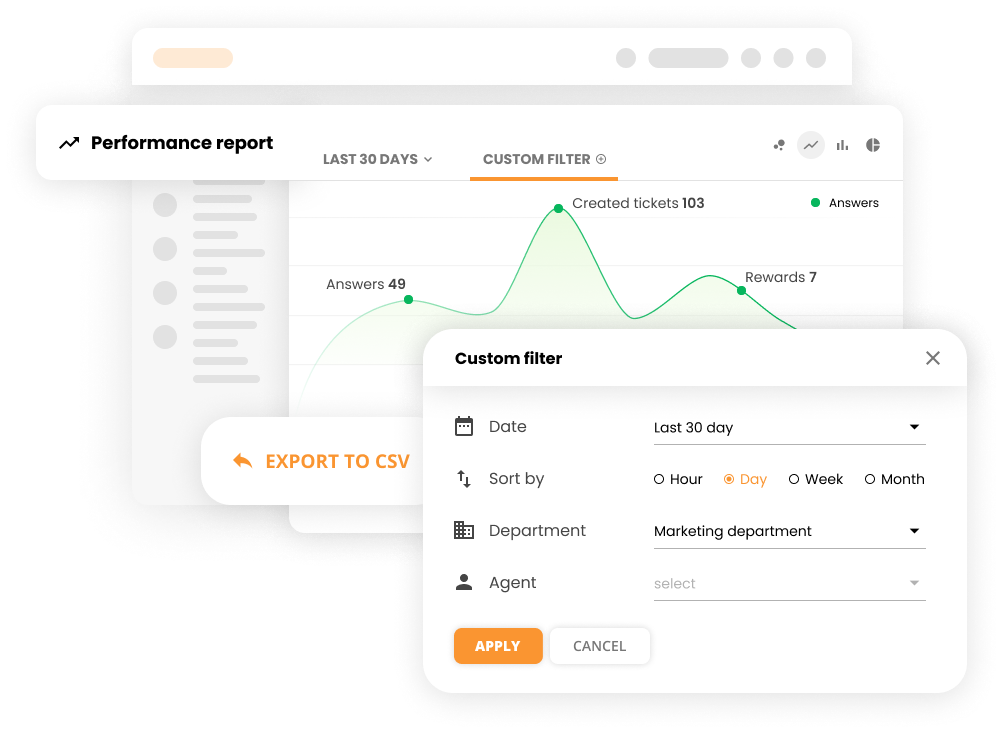
What KPIs should you track?
Some of the most important ones include:
- the number of calls answered/received
- average handle time
- customer satisfaction score
- agent productivity
Which tools to use for tracking KPIs?
- spreadsheets – great for tracking data and organizing information
- performance monitoring tools – can help you track KPIs over time and identify trends
- LiveAgent – get insight into agent call performance and all metrics
No matter how well you plan, things can always go wrong in a call center.
Why is having a disaster recovery plan important?
Having a disaster recovery plan in place can quickly get your call center back up and running if something happens. This helps minimize the impact that a crisis can have on your call center operations.
What should be included in a disaster recovery plan?
- steps you will take to recover from a disaster
- people who will be responsible for carrying out these steps
- tools and resources they will need in order to do so
Which tools to use for creating a robust disaster recovery plan?
- assurance call center checklist
To ensure that your call center provides a consistent customer experience, it’s essential to pay more attention to its quality assurance procedures.
Why are quality assurance procedures important?
It helps you track the level of customer service that your call center is providing and identify areas that need improvement.

How to handle quality assurance procedures?
- regular customer surveys
- reviewing agent call recordings
- conducting mystery shopping audits
Which tools to use for establishing customer service quality assurance procedures?
- quality assurance software – this can help you track the level of customer service that your call center provides
Before you go live with your outbound/inbound call center, it’s vital to perform a series of tests to ensure that everything is working correctly.
Why is testing important?
Any existing issues must be identified and fixed before your call center can be accessed by a larger audience. By preparing in advance, you will ensure that nothing goes wrong during the launch.
What should you test?
Before going live, you should test the following:
- call flow
- call center scripts
- routing
- technology
Which tools to use for performing tests before going live?
- test call center software – this can help you simulate real-world conditions and identify any problems that may exist
- test call scripts – check your call flow and scripts
Now that your call center is ready, you can launch it.
Summary of the call center setup checklist
- Set the goals and objectives of your call center
- Identify and estimate the number of calls
- Determine the setup type
- Evaluate the costs and benefits of each type to determine which is best
- Estimate budget and staffing requirements
- Decide on the type of call center software
- Choose a software provider based on your needs
- Optimize call center features
- Hire your call center staff
- Train your team for any potential incidents
- Provide your call center with proper equipment
- Organize your call center processes
- Model the organizational structure of your call center
- Choose relevant KPIs
- Create a robust disaster recovery plan
- Establish customer service quality assurance
- Perform tests
Frequently Asked Questions
How difficult is it to set up a call center?
Setting up a call center can be difficult, but with the right tools, it can be a relatively straightforward process. If you go step by step and check off the points you’ve already covered, you won’t miss anything. By using this method, you can prevent future changes from disrupting your call center, plus you’ll save money and effort.
What should launch day look like?
On the day of your call center’s launch, make sure everything is in order. All technology should be working properly, while all scripts and procedures should be tested. Be prepared for a few glitches on the first day, but everything should run smoothly with a careful planning process
What are the steps involved in setting up a call center?
To set up a call center, you must choose the right technology, establish procedures, and perform tests. Our call center setup checklist will walk you through every step of this process.
Can LiveAgent help me start my own call center business?
Yes, LiveAgent can help you start your own call center business. It provides all the tools and resources you need to get started, plus our team of experts is available to help you every step of the way.
What documents are required for call center?
It's vital to clarify that required documents for call center employees may vary based on the industry, country, and company. Generally, they may need identification documents, proof of address, potentially a social security or tax number, and relevant educational qualifications. Individuals should consult their employer or HR for role-specific documentation requirements.
How do I run a successful outbound call center?
A successful outbound call center needs well-trained, motivated agents who can engage consumers positively, supported by ongoing training. Essential tech tools include a reliable CRM system, call tracking, recording software, and predictive dialing systems. Clear goals and success metrics like conversion rates and call resolution times should be established. Compliance with regulations like the TCPA and National Do Not Call Registry is also crucial to build trust and prevent legal issues. Success can however vary depending on industry, target audience, and business goals.
Provide excellent customer service
Discover unparalleled customer support with LiveAgent's all-in-one software. Benefit from 24/7 service, a free trial without a credit card, and seamless integration across 130+ ticketing features. Enhance your business with fast setup, AI assistance, live chat, and more. Choose LiveAgent for exceptional service and satisfied customers.
Landing PPC Archive - LiveAgent
Boost customer support with LiveAgent's all-in-one help desk software. Try free—no credit card needed! Live chat, ticketing & more!"
You will be
in Good Hands!
Join our community of happy clients and provide excellent customer support with LiveAgent.

Our website uses cookies. By continuing we assume your permission to deploy cookies as detailed in our privacy and cookies policy.

- How to achieve your business goals with LiveAgent
- Tour of the LiveAgent so you can get an idea of how it works
- Answers to any questions you may have about LiveAgent

 Български
Български  Čeština
Čeština  Dansk
Dansk  Deutsch
Deutsch  Eesti
Eesti  Español
Español  Français
Français  Ελληνικα
Ελληνικα  Hrvatski
Hrvatski  Italiano
Italiano  Latviešu
Latviešu  Lietuviškai
Lietuviškai  Magyar
Magyar  Nederlands
Nederlands  Norsk bokmål
Norsk bokmål  Polski
Polski  Română
Română  Русский
Русский  Slovenčina
Slovenčina  Slovenščina
Slovenščina  简体中文
简体中文  Tagalog
Tagalog  Tiếng Việt
Tiếng Việt  العربية
العربية  Português
Português 


